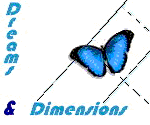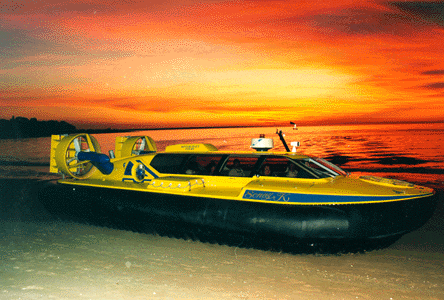|
|
| 4wings.com Main page |
| Design Main page |
| Update March 99 |
| Update Jan. 2000 |
| Update June 2000 |
| Update Autumn 2002 |
| Help |
 |
|
|
| 4wings.com Main page |
| Design Main page |
| Update March 99 |
| Update Jan. 2000 |
| Update June 2000 |
| Update Autumn 2002 |
| Help |
 |

| To all passing by at our pages, lot of thanks,
and to all sending in some info even more thanks from us as well as all
the Hovercraft interested surfer. The main part of our update is from Ross
McLeod - Airlift Australia with his designs. I saw his crafts a few
years ago on hunter.net which disappeared from the www. So lets give these
nice designs a new home where we can all appreciate the sweeping
lines of the design.
Besides we post some info on differentially acting "Elevons" which might be for some of us quite interesting. All the credit goes to MAF Hovercraft's. Follow-up on Hovercraft construction requirements and regulations from Canada which made the long way via snail mail to S-Texas. Last not least I want to remind you all to sign up for our list server to get informed about future update like this. Lot of thanks Michael |
|
 |
|
|
designed some of the commercial crafts you might
see in Australia, Hong Kong, Malaysia and other parts of this globe. His
crafts are designed after existing regulations - ( British Loyd's / USCG
/ HCGB / Au. ...) which gives the future owner the possibility to use the
craft on a commercial basis with prepared paperwork. Something you should
hold in mind before you commission a craft for smooth operation. As well
as none of his craft have had structural failures.
The Hoverflyer Length : 5.60 meters
For more detailed info please see our
Guest page.
|
|
|
Using Differentially Acting “Elevons” T. J. R. LONGLEY by T Eng(CEI) AMRAeS Chief Designer, MAF Hovercraft The design of the “River Rover” light Utility hovercraft posed a number of stringent demands. The most exact-ing was without doubt the requirement that the craft should possess the ability to negotiate sharp bends in rivers with the least possible sideways skidding. Hitherto, most light hovercraft have relied on vertically hinged rudders or vanes to achieve directional control. With undesirable “side effects” of such systems . Suffice it to say here that, as a result, lack of really positive control is a feature which has to a large extent become accepted as inevitable. On larger commercial craft where more precise control is a requirement, this is only achieved at considerable expense and complication. Various systems, such as skirt shift or skirt lift, “puff-ports”, and pivoting Propeller pylons are employed. Sometimes a combination of all three systems may be found on one craft. The “elevon” system of control not only combines the functions of these systems in one extremely simple system, but with little extra complica-tion it can also provide longitudinal pitch control, and thrust control over a full range from full forward thrust, through zero, to full reverse thrust. This feature makes the elevon system readily adaptable to hovercraft using the simplest of integrated lift and propulsion systems (i.e., one where the engine is permanently engaged to both lift and propulsion fans). The “River Rover” embodies such an integrated System and, together with its elevon controls, results in a hovercraft which is of extremely simple construction, but which is easy to drive and very maneuverable. The Effect of the Elevon System on Directional Control In its simplest form, an elevon can be considered as a pressure balanced
butterfly valve hinged horizontally across the efflux of a propulsion fan
duct. These ducts are mounted in pairs, each one being positioned either
side of the craft center line, as far outboard as practicable. A single
engine drives both fans via belts and pulleys. The elevons are rigged so
that, in the neutral Position, both lie
|
|
|